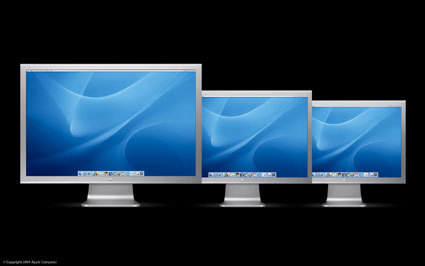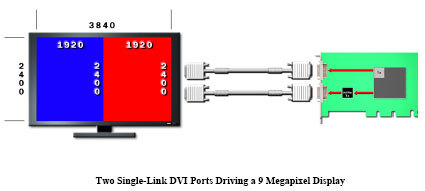The TFT Connection: Do NVIDIA and ATi Deliver?
DVI Dual Link
The limitation of the TMDS transmitter to a pixel frequency of 165 MHz limits the resolutions available on a TFT display. Even with reduced blanking, the end of the line is quickly reached. Also, reducing the refresh rate can have very negative results in certain applications.
To circumvent this problem, the DVI specification proposes an additional mode of operation called Dual-Link. In this case, two TMDS transmitters are used in combination to feed a single monitor through a single connector. The available bandwidth doubles to about 330 MHz, which is enough to realize any possible resolution currently imaginable. Important note: A graphics card with two DVI connectors is not a Dual-Link card! On a Dual-Link card, two TMDS transmitters drive a single DVI connector!
Here we see the mode of operation when two TMDS transmitters are used in combination to drive a Dual-Link display.
A graphics card with a good DVI signal using reduced blanking would still be sufficient to drive one of Apple's new 20" and 23" Cinema Displays at their native resolutions of either 1680x1050 or 1920x1200, respectively. However, to drive the 30" version at its native resolution of 2560x1600, there is no way around Dual-Link operation.
Because of its very high native resolution, the 30" Apple Cinema Display needs to be connected via Dual-Link DVI!
Although DVI is almost standard on high-end 3D workstation cards, there are not many consumer-level graphics cards available today that offer dual-link DVI connectors. But there's a way to work around this:
In this example, two single-link ports are used to supply a nine megapixel display (3840x2400). The image is simply split along the middle. However, both the monitor and the graphics card driver explicitly need to support this mode!
Get Tom's Hardware's best news and in-depth reviews, straight to your inbox.
-
Thanks for this. Saved me lots of trouble with (not) chosing an incompatible DVI cable for my monitor / computer connection.Reply


